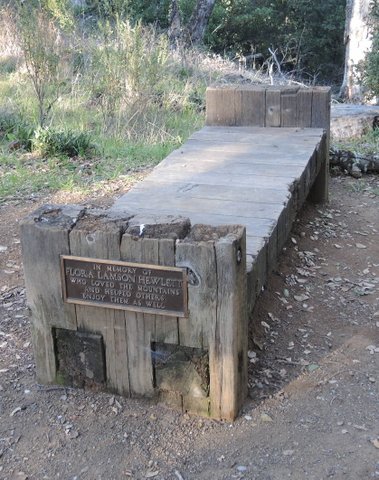To get to Ridge Winery from Cupertino you must travel 4.5 miles uphill, along a narrow switchback road, past vineyards and open space, to an elevation of 2300 feet. Reaching the top and looking east, you have a grand view of expansive “Silicon Valley”.
The Santa Cruz Mountains and the Pacific Ocean lie to the west.
Far below is the great rift of the San Andreas Fault, marking the division of the North American Plate and the Pacific Plate.
At Ridge Winery, you are standing on the North American Plate. This small portion of the plate and the vineyard is known as Monte Bello or beautiful mountain. It is unique because of a very rare and desirable limestone subsoil. 100 million years ago this land was near Indonesia, traveling east on the Pacific Plate. Now it comprises the terroir for the cabernet and zinfandel grapes grown here.
 To some, a visit to Ridge is a pilgrimage. Ridge Winery is one of the early Santa Cruz Vineyards and Wineries. It was first developed in 1885 by Italian immigrant and San Francisco physician, Dr. Osea Perrone. He terraced the land, planted vines, and produced red wine from his grapes by 1892.
To some, a visit to Ridge is a pilgrimage. Ridge Winery is one of the early Santa Cruz Vineyards and Wineries. It was first developed in 1885 by Italian immigrant and San Francisco physician, Dr. Osea Perrone. He terraced the land, planted vines, and produced red wine from his grapes by 1892.
Ridge Winery is also significant because its 1971 Monte Bello Cabernet was featured as one of 10 red wines in the 1976 blind tasting in Paris, now known as “the Judgment of Paris”. This was the event that catapulted California fine wine into global consciousness. When a California white wine (Chateau Montelena) and a California red wine (Stags Leap) took first place in that tasting, the French judges tried to dismiss the results by suggesting that the French wines would prove better with age. But when the same wines were subjected to a restaging of the competition for the 30th anniversary in 2006, Ridge took a decisive first place, proving that California wines were consistent and that Ridge’s wine improved with time.
Paul Draper was the wine maker for that 1971 cabernet and he is still the wine maker at Ridge today. Then, he was a young PhD from Stanford with a degree in philosophy and a short stint wine making in Chile. His manual for making wine was an 19th century treatise that could have been used by Dr. Perrone. His approach was simple and traditional. He called it “pre-industrial”. Today Draper still uses that “non-interference” approach.
- Let the grapes ripen, then hand-pick and hand-sort
- No artificial yeasts
- No chemicals
- Minimal sulfer dioxide
- Age the wine in American oak
- The older the vine, the better the grapes
- Let the taste of the terroir come through
 It helps that the soil and climate of California, especially the limestone, is very similar to that of the Bordeaux region in France. Draper modestly insists that he had great raw material for his task. Yet Draper doesn’t lack for modern equipment. Ridge Winery may use a spectrophotometer, a liquid chromatograph, deep irrigation channels with carefully monitored water, or a gas chromatograph when necessary. These devices assist the winemaker but restrain his impulse to interfere with the slowly aging varietals.
It helps that the soil and climate of California, especially the limestone, is very similar to that of the Bordeaux region in France. Draper modestly insists that he had great raw material for his task. Yet Draper doesn’t lack for modern equipment. Ridge Winery may use a spectrophotometer, a liquid chromatograph, deep irrigation channels with carefully monitored water, or a gas chromatograph when necessary. These devices assist the winemaker but restrain his impulse to interfere with the slowly aging varietals.
Draper’s acreage today includes vineyards in Sonoma and Geyserville. His output includes an award winning zinfandel, a Santa Cruz estate bend, and even a chardonnay. But he remains meticulous and artful. He and his associates taste the varietals and create blends of cabernet sauvignon, merlot, cabernet franc and petit verdot.
But the Monte Bello remains Ridge’s signature blend, a wine that is known to taste better after a decade of aging.




